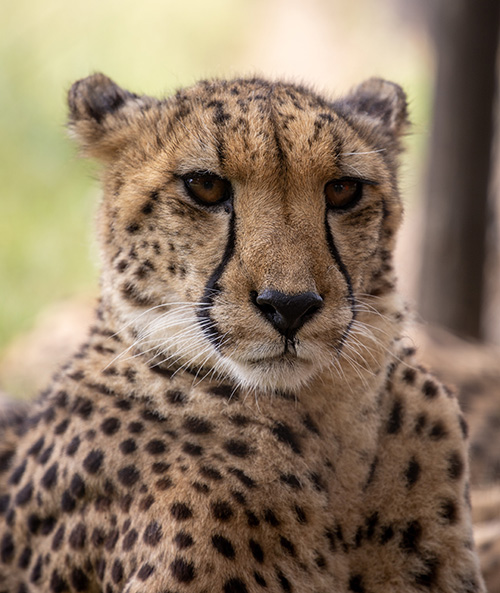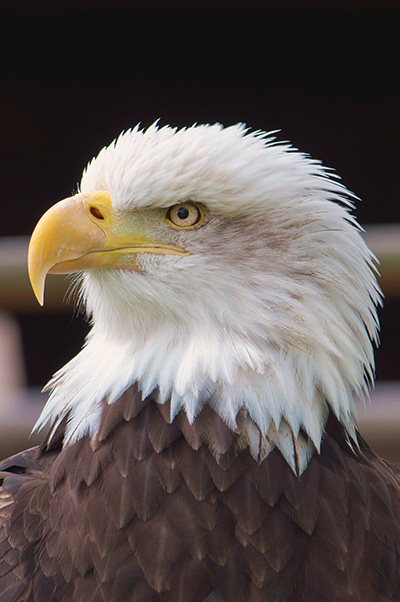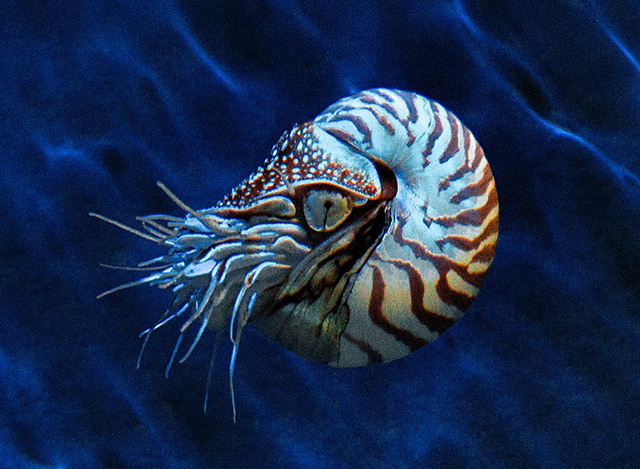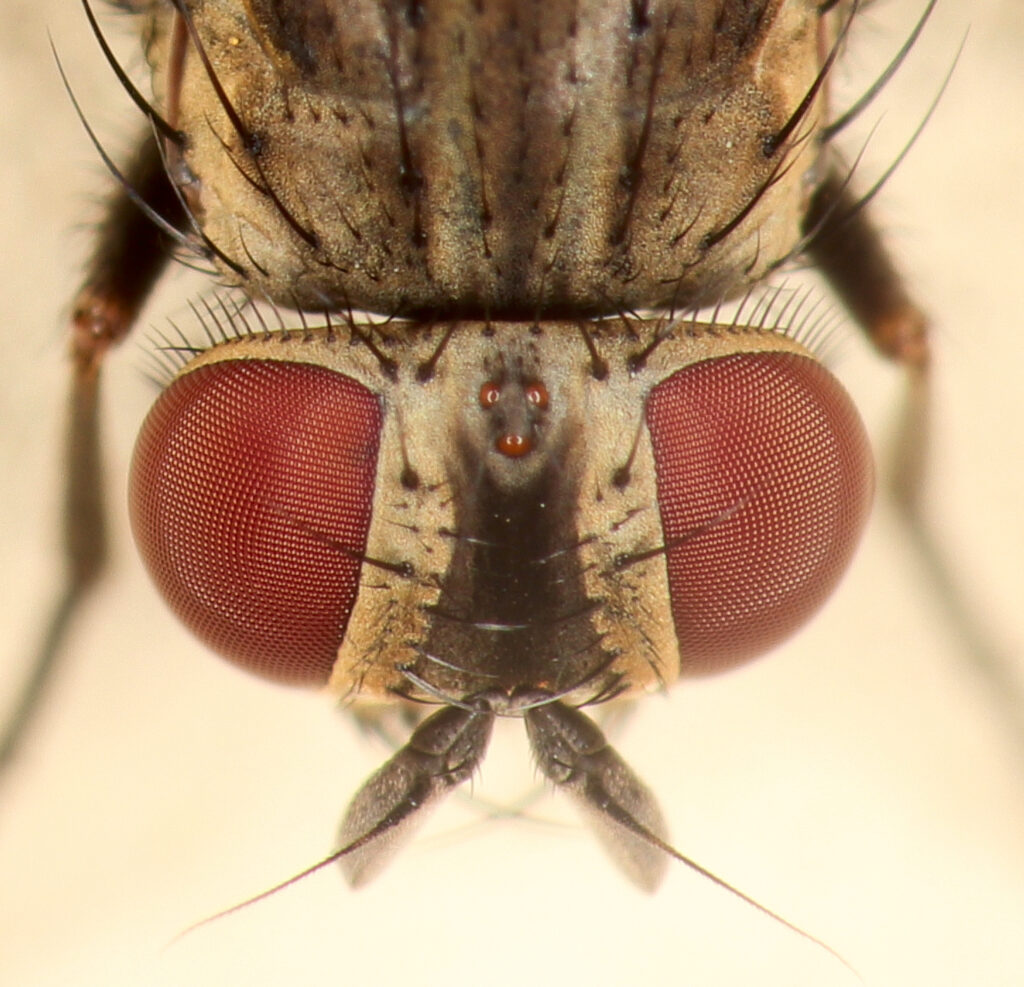We previously explored the differences between the inverted retina of the human eye, and the verted retina of cephalopods. We found that each system was well-designed for the typical environment in which the creature lives. This prompts us to ask what other types of eyes the Lord has created. From a biblical creation perspective, we expect to find both similarities (due to having a common Creator who is a God of order) and differences (due to the Lord’s creativity) in the eyes of different varieties of animals. Furthermore, we would expect each type of eye to be well-suited for the organism in its environment, and irreducibly complex. And this is indeed exactly what we find.
Variations in the Fovea

In humans, we have a fovea in our retina at the center of our vision that has a high density of cones and no rods, supplying us with very sharp images of anything we look at directly. The fovea is approximately circular. However, a cheetah’s fovea is horizontally elongated, giving the animal an enhanced horizontal range of clarity, at the expense of vertical range. It is the perfect arrangement for an animal that scans the wide African plains for hunting opportunities.
Many species of diurnal birds actually have two foveae in each eye! Examples include hawks, eagles, falcons, and hummingbirds. One fovea is located at roughly the center of the field of vision, much like ours, and is called the shallow fovea. The other is located about 45 degrees to the side and is called the deep fovea. It is deeper and has more cones per unit area than the shallow fovea.

Thus, an eagle has three spots of exceptionally high visual acuity in its field of view, in contrast to our single spot. One is dead ahead, just like ours. Since both eyes see this spot in high acuity, the image is 3D stereoscopic. But the eagle also has high visual acuity at a spot 45 degrees to the left using its left eye, and 45 degrees to the right using its right eye. These are not stereoscopic views, but have extremely high acuity. The density of cones in the eagle’s deep fovea is about five times that of a human fovea. Eagles therefore have greater visual acuity than humans. They can see at 20 feet what a human can see at 5 feet. Unlike humans, most diurnal birds have far more cones than rods. And many birds are tetrachromats: having four types of cones and experiencing a 4-dimensional color space, in contrast to our 3-cone system.
Night Vision
The situation is different for nocturnal birds. An owl has (at most) only one fovea per eye, located near the center of the retina much like ours.[1] Unlike diurnal birds, the owl’s retina has a much larger number of rods than cones. Even the fovea of the owl is dominated by rods which are completely absent in the human fovea. This makes sense because owls are nocturnal creatures, and rods are much more sensitive to light than cones. This is part of the reason why owls have such good night vision.

Other design features include the shape and size of the eyes. Owls have eyes that are very large in proportion to their body, and are more cylindrical than round. This maximizes the amount of light that enters the eye, but it also means that owls cannot rotate their eyes; they must turn their head to change the direction of their gaze. Of course, the Lord equipped the owl with a neck that has an extraordinary turning range – up to 270 degrees in either direction! This is another example of how irreducible complexity involves not only individual organs, but the relationships between them. The extremely flexible neck of the owl would be unnecessary if it had “normal” rotating eyes; but its non-rotating eyes might be a disadvantage without the extraordinary neck. Each part requires the other to have “evolved” first in order to be helpful for survival – unless of course the Lord created this animal with genetic information for all these co-dependent traits.
The forward-facing position of the eyes gives the owl a field of view of about 110 degrees, with 70 degrees of overlap between the two eyes, allowing for stereoscopic binocular vision. Humans, on the other hand, have about a 180-degree field of view with about 140 degrees of stereoscopic binocular vision. But then again, we can’t turn our neck as far as an owl. God equipped each organism with traits useful for its survival.
Owls possess another design feature common to nocturnal animals: the tapetum lucidum. This is a reflective surface that lies at the base of the retina. It reflects back any light that missed the photoreceptors, giving the light a “second chance” to be detected. This increases the retina’s sensitivity to light by nearly 50%, at the slight expense of visual acuity. It has been estimated that an owl can detect light nearly one hundred times fainter than a human can detect. Many other animals such as cats also have a tapetum. This is why at night a cat’s eyes appear to shine when illuminated by a bright light.

Cats and owls are two very different animals. Is it reasonable to suggest that they both evolved precisely the same mechanism to increase light sensitivity? Many other nocturnal animals also possess a tapetum. It makes perfect sense for the Lord to give these creatures the same mechanism for enhanced night vision since they are nocturnal.

Cats have another feature that allows them to adjust very quickly to changing light conditions: vertically elongated pupils. The round pupils of the human eye can change size by a factor of four, allowing the eyes to adapt to changing brightness conditions by a factor of 16 nearly instantly. However, the vertical slit pupils of cats can close completely, giving them a much greater range of fast brightness adaptation.[2] The drawback is that the depth of field (the range over which things appear in focus) is increased only horizontally when a cat’s pupils constrict, not vertically.[3] So, under bright conditions, your eyes provide a clearer image than a cat’s eyes. Human eyes also provide a much richer color experience than those of a cat. But at night, the cat’s vision is superb. Each creation is masterfully designed by the Lord for its unique situation.
Invertebrates
The eyes we have studied so far all use a transparent lens and (in many cases) a transparent cornea to refract or bend light to a focus on the retina. But the Lord used a different mechanism for lobsters. A lobster’s eyes use innumerable square tubes with a reflective surface to reflect light at shallow angles toward the photosensors. Thus, a lobster’s eyes use reflection rather than refraction. The design is so ingenious that NASA has used it to build wide field-of-view X-ray telescopes.[4]
Indeed, invertebrates display a great variety of irreducibly complex designs for the eye. Some use the mechanism of a pinhole camera. In this design, there is no lens or cornea, but only a very small hole through which light passes and forms an image on the retina. This produces a dimmer and slightly blurred image compared to an eye with a lens. But it is simpler and there is no need for a focusing mechanism. The nautilus uses this system in concert with its verted retina.

Many scallops, clams, and ostracods use a concave mirror approach, somewhat like a reflecting telescope. The light passes unfocused through the eye until it is reflected off the tapetum. The tapetum focuses the light onto the photoreceptors.
Rather than a single lens, many insects use a focal apposition compound eye consisting of thousands of lenses. Each lens forms the outer surface of a structure called an ommatidium. The ommatidia have photoreceptor cells at their base. Thus, each one is like a tiny camera, and the combined signals of all the ommatidia form a single mosaic image. The housefly uses this system, as do many diurnal insects. Houseflies are dichromats, having only two types of cones, and cannot detect long wavelengths of light that humans would perceive as red. Scientists believe that the housefly’s visual acuity is very poor compared to ours, but that their eyes are very sensitive to motion. That is why it is hard to sneak up on a fly.

Many nocturnal insects and deep-sea invertebrates have a refracting superposition compound eye. It too has thousands of lenses, but they are not connected to any particular photoreceptor cells. Instead, the photosensitive cell that receives the light depends on the angle of the incoming light. So, light from a distant point source will pass through all the lenses and will be focused onto one spot on the retina. This system is far more sensitive to light than the focal apposition compound eye since the latter is only able to use one lens for a distant point source. So, it makes sense that nocturnal creatures would be equipped with eyes that use light more efficiently.
In addition to compound eyes, many insects have “simple eyes.” These are light detectors that do not form any specific image. They may or may not have a lens. Simple eyes are for detecting light, movement, or general shapes, but do not form the sophisticated mental picture provided by compound eyes. Spiders often have three sets of simple eyes on their head, along with one pair of larger “principal eyes.” Some scorpions have seven pairs of simple eyes. Bees have two compound eyes, and three simple eyes. Bees detect a slightly different range of wavelengths of light than we do. Bees can see ultraviolet light (light with a wavelength too short for humans to see), but they cannot see the long wavelengths that we perceive as red.
Trilobites
Trilobites are an extinct class of arthropods that were once abundant in earth’s oceans.[5] Most varieties ranged in size from ½ to 2 inches. However, a few varieties grew larger than 2 feet. An evolutionist might predict that trilobites would all have similar eyes since they are supposed to be closely related. But in fact, three fundamentally different types of eyes are found in the various kinds of trilobites, with many additional variations in their arrangement. Furthermore, some varieties of trilobites, such as most species in the Agnostida order, had no eyes at all.

You might think at first that we couldn’t possibly know anything about the eyes of an extinct form of life since soft tissue decays quickly and is not commonly preserved in invertebrate fossils. But the lenses of trilobite eyes were made of calcite – a hard, transparent crystal that does not easily decay. Being made of calcite, the compound lenses of the trilobite eye were hard and inflexible, and therefore could not change focus the way our eyes do. But the trilobite had other ways of producing sharp images, including uniquely shaped lenses.
Most varieties of trilobites had holochroal eyes. These were compound eyes consisting of thousands of individual lenses (up to 15,000 in some cases) arranged in a hexagonal, “honeycomb” pattern with no space in between. But all these lenses were covered by a single continuous cornea. The lenses were set on a kidney-shaped surface, with each lens forming the end of an ommatidium.
One suborder of trilobites (Phacopina) had some members with a unique compound eye design called schizochroal. These had generally larger (and fewer) lenses than holochroal eyes: up to 700 in some cases. Furthermore, each lens had its own cornea and was separated from other lenses by an interlensar sclera. Each cornea extended deep into the surrounding sclera. Each lens was biconvex – consisting of two calcitic parts of different refractive indices. This unique shape essentially eliminates spherical aberration (a problem common in spherically shaped convex lenses), producing extremely accurate images on the retina, and producing a large depth of field. That is, objects would appear clear over a large range of distances with no need to adjust the focus. As far as we know, no other organisms living or extinct have this unique eye design.
Interestingly, scientists in the 1600s discovered how to make biconvex lenses that minimize spherical aberration. There are two solutions. Christiaan Huygens discovered one, and Rene Descartes discovered the other. Of course, the Lord knew about these solutions, and implemented them in Phacopina trilobite eyes nearly 6000 years earlier. The Huygens lens is found in the trilobite Crozonaspis, and the Descartes lens is found in the trilobite Dalmanitina. [6][7]
Finally, a few varieties of trilobites had a third type of visual system: the abathochroal eye. These compound eyes had the fewest lenses (up to about 70 maximum), each with its own cornea. However, the cornea does not extend deep into the sclera as with schizochroal eyes.
In addition to fundamentally different types of eyes, trilobites also had various strategies for eye deployment. Some trilobites had small eyes, whereas others had large eyes oriented so as to provide a nearly 360-degree view. Some trilobites had eyes on the end of stalks, much like living snails. The variation of eye design in trilobites is staggering. But each solution is well-designed, and we do not find any “in-between,” partially functioning eyes as if they were evolving.
Conclusion
An evolutionist might suppose that the different types of eyes in trilobites represent different stages of evolution. He might expect the trilobites with no eyes to be at the bottom of the geologic column, with the more sophisticated eyes being found progressively higher, having evolved over millions of years. But this isn’t what we find. The lowest fossil-bearing layer of the geologic column, the Cambrian, contains trilobites with fully functional compound eyes. In fact, the eyeless trilobites are found higher up! Furthermore, each type of trilobite eye is fully functional, and irreducibly complex. We do not find any in-between forms, nor any trilobites with evidence of a non-eye becoming an eye. Instead, each is amazingly and creatively designed.
And this is true of all other organisms as well. Sighted organisms employ a wide variety of different designs for their visual system. But each system functions only if all its essential components are intact, without a trace of evolution. There is also evidence of the fall of man. Though neo-Darwinian evolution is not seen, evidence of “devolution” and degradation is abundant. Some animals have degraded or absent vision, whereas this was not true of their ancestors. But the eyes we observe in healthy animals are clearly designed, each with certain specialty features for its environment. This is what we expect of the handiwork of God.
[1] Some owls, such as the tytonid barn owl, do not have a fovea.
[2] Since the size of the slit pupil can go to zero, the ratio of maximum size to minimum size, and hence the change in brightness, is infinite in principle.
[3] Some animals have horizontal slit pupils, which, when constricted, provide increased depth of field in the vertical direction, but not in the horizontal direction.
[4] https://aip.scitation.org/doi/abs/10.1063/1.4927259?journalCode=rsi
[5] The name trilobite refers to the characteristic three-lobe structure of their body.
[6] https://www.tandfonline.com/doi/abs/10.1080/08912969609386557
[7] https://www.sciencedirect.com/science/article/pii/S0042698999002163

